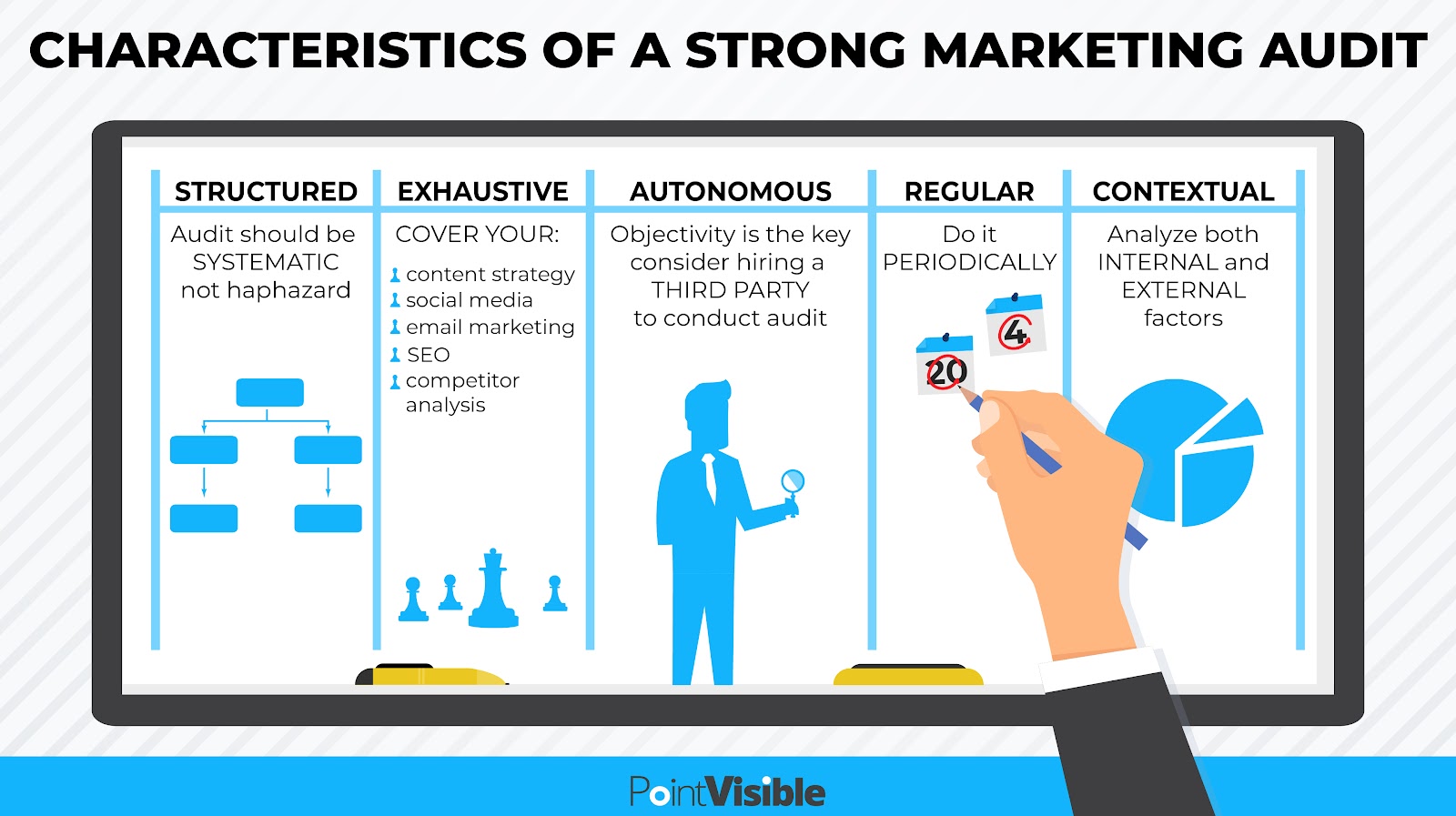Key Aspects of an Inbound Marketing Audit

Inbound marketing is becoming increasingly popular and widely used. We are seeing companies leverage marketing automation software, blog, email, etc., to operate the same playbook they have for years but in a slightly different way.
Basically, they’re letting their marketing sail along, without really watching or analyzing to see if it’s helping their business grow (which ideally, is everyone’s target, right?). They’re stagnant in their methods. And let us be real with you, we know it’s tough to break out of that.
We give you six simple steps to perform your own marketing audit to assist you in your inbound marketing Audit
1. Analyze Your Goals
Why are you doing inbound marketing? Who are you trying to reach/target? Ask these tough questions up front, so you can more easily determine how to evolve your plan to maximize its impact. Clearly define your goals, you’ll be able to pave the pathway for future growth.
If you’re confused on what goals to set, here are some ideas:
• Increase leads
• Improve quality of leads
• Improve conversion rates
• Optimized content Marketing
• Improve and increase links
With the end goals clearly defined, it’s easier to lay emphasis on elements of your strategy which need to be tweaked to assist you in reaching those goals.
2. Define Your Buyer(s)/Customers
Next phase in the audit process is to clearly define your buyer personas. This is probably a step that you took when you initiated your inbound strategy. However we recommend that you revisit to make sure they are aligned with the vision of the company and established goals.
If buyer personas were something you skipped in the beginning, not to worry, now is the right time to do that. Buyer personas are your ideal customers; deciding the target audience knowing they would have the highest probability level of seeing value in your offers and becoming happy customers.
Some important elements to include in your buyer persona profiling are their job responsibilities, hierarchy in their company, pain areas, a day-in-the-life scenario and core values and objectives that position your organization as the solution that best meets their needs.
3. Assessment of the Effectiveness of Your Blog
This is the very first thing to check when conducting an inbound marketing audit for our customers. Possibilities are, if you are doing inbound marketing, then you are already blogging – Excellent! Then it’s time to deep dive into company’s blogging efforts and then emphasize on attributes such as:
• Frequency of posts
• Relevance of the posts
• Presence of CTAs in the blog posts
While there are several factors we analyze in the blog, these are the three primary areas to cover while assessing a blog. A business should aim at a consistent blogging strategy in place to maintain traffic. And this is also the best way forward to achieve an optimized content marketing for an effective inbound marketing strategy.
4. Run the Website through Performance Measurement Tools
Next, you would like to analyze a website performance with the help of available tools. Moz is a go-to tool for all of the data you need to complete an inbound audit. With the help of Moz open site explorer, you can easily find and analyze key metrics such as domain authority, page authority, number of root links domains, inbound links, holistic social media metrics and much more!
5. Prepare Information in a Report
Once all necessary information has been discovered, it’s time to put it into an easily understandable format. Use custom made assessment template in PowerPoint to compile & represent all the collected data. The assessment should now cover all these topics discovered and any other vital information found through inbound audit.
6. Make a Plan and Measure Efforts
Now that site’s inbound marketing audit is complete, it’s the right time to put your findings into action. As you’re implementing an inbound marketing plan, you would like to revisit your goals and ensure that you’re taking the correct actions to complete these goals.
Once you can see the numbers and understand the process of generation, it becomes much easier to plan and predict inbound strategic solutions. Lastly, it’s never too late to consult an expert in the field to conduct the audit.An expert can also help you plan for optimized content marketing, which in many ways is the basis for effective inbound marketing.





